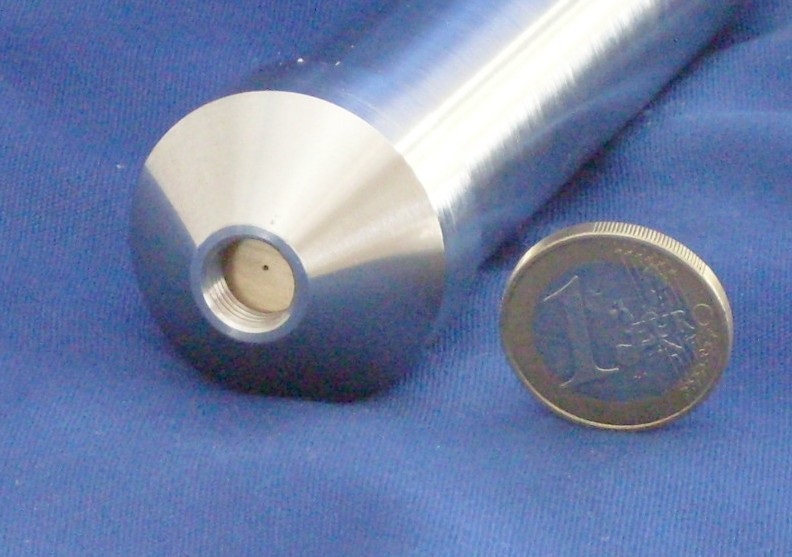Compact and inexpensive Plasma Sources
Compact and inexpensive Plasma Sources by Aurion Anlagenbau GmbH
Aurion Anlagentechnik GmbH
Beschreibung
Compact and Inexpensive Plasma Sources
1. Introduction
Compact and inexpensive plasma sources are becoming increasingly important in various industries, including medical technology, electronics manufacturing, material science, surface treatment, and environmental applications. These plasma sources are designed to be smaller, more affordable, and easy to integrate into production lines or research settings. They are especially useful for applications such as surface cleaning, activation, sterilization, coating, and disinfection. The goal of compact and inexpensive plasma sources is to offer effective plasma treatment without the need for expensive and large equipment, making them more accessible to a wider range of industries and applications.2. Types of Compact and Inexpensive Plasma Sources
Plasma Source Description Applications Corona Discharge Plasma A low-cost, high-voltage discharge between electrodes in air or gases. It generates a non-thermal plasma at atmospheric pressure. Surface cleaning, activation, coating of plastic and metal surfaces, biofilm removal. Dielectric Barrier Discharge (DBD) This type of plasma source uses electrodes separated by a dielectric material. It is compact, operates at atmospheric pressure, and requires no vacuum. Surface activation, sterilization, coating, wound care, air purification. Penning Discharge Plasma This compact plasma source operates by generating plasma in a gaseous environment using a magnetic field. It is used in low-pressure or atmospheric environments. Surface treatment for medical devices, polymer modification, coating applications. Microplasma Sources Small-scale plasma sources that can operate at atmospheric pressure. These sources use miniaturized equipment for localized treatment and are low-cost. Surface cleaning, sterilization, material processing, electronics. Gliding Arc Plasma A plasma source that produces plasma by arc discharge between two electrodes that glide over a surface. It is compact and energy-efficient. Waste treatment, surface modification, chemical synthesis, air cleaning. High-Frequency (RF) Atmospheric Plasma Utilizes radiofrequency (RF) power to generate plasma at atmospheric pressure. It can be operated in a compact form. Surface activation, cleaning, disinfection, biomedical applications. Low-Pressure RF Plasma Compact and inexpensive RF plasma sources generate low-pressure plasma for cleaning and activation of various materials. Cleaning of sensitive components, material modification, sensor activation.3. Advantages of Compact and Inexpensive Plasma Sources
Advantage Description Cost-Effective These plasma sources are designed to be affordable, making them more accessible to small businesses, startups, and researchers without large budgets. Compact and Portable Many plasma sources are small and lightweight, making them easy to install, transport, and integrate into existing systems. Ease of Use These devices often come with simpler operation controls and require less specialized knowledge, making them accessible for non-experts in various industries. High Efficiency Many compact plasma sources provide high-efficiency plasma generation and treatment, ensuring effective surface modification or cleaning with minimal energy consumption. Versatile Applications Compact plasma sources can be used in a wide range of industries such as electronics, medical devices, packaging, and automotive, increasing their overall utility. Environmentally Friendly Plasma treatment, especially atmospheric plasma, does not require harmful chemicals, reducing environmental impact and enhancing workplace safety.4. Key Applications of Compact and Inexpensive Plasma Sources
Application Description Example Surface Activation Plasma sources can activate surfaces to improve adhesion of coatings, adhesives, or paints. This is useful for materials like plastics, metals, and glass. Medical device coatings, adhesion improvement in electronics or automotive parts. Surface Cleaning and Sterilization Atmospheric plasma cleaning is used to remove contaminants such as oils, dust, and organic residues from surfaces. It is particularly useful in medical and electronics manufacturing. Sterilization of medical instruments, cleaning of electronic components, biosensor preparation. Coating and Functionalization Plasma treatment is used to enhance surface properties, such as hydrophilicity, biocompatibility, and corrosion resistance. Implants, dental prosthetics, and surgical tools benefit from functionalized surfaces for improved performance. Wound Healing and Disinfection Compact plasma sources are used in wound care for sterilization, disinfection, and promoting tissue regeneration. Plasma-treated wound dressings, burn care, and chronic wound healing. Material Modification Plasma can be used to modify material properties, such as surface roughness, chemical composition, or adhesion potential. Polymer treatment, plastic surface modification, and metal surface enhancement for various industries. Environmental Treatment Plasma sources are used for air purification, wastewater treatment, and degradation of pollutants. Air purification in industrial settings, degradation of organic pollutants in water treatment.5. Examples of Compact and Inexpensive Plasma Sources
Plasma Source Size Cost Range Power Requirements Applications Corona Discharge Plasma Small Low-Cost Low Power Surface cleaning, activation, adhesion improvement. Dielectric Barrier Discharge (DBD) Compact Affordable Moderate Power Sterilization, surface treatment, wound healing. Penning Discharge Plasma Small Inexpensive Low to Moderate Surface modification, polymer processing, device cleaning. Microplasma Sources Very Small Low-Cost Low Power Localized treatment for electronics, material surface modification. Gliding Arc Plasma Compact Affordable Moderate Power Surface modification, pollutant degradation, waste treatment. High-Frequency RF Plasma Small Inexpensive Moderate Power Surface activation, sensor preparation, coating.6. Conclusion
Compact and inexpensive plasma sources provide a versatile, affordable, and efficient alternative to traditional methods for surface modification, cleaning, activation, and sterilization in various industries, including medical technology, electronics, automotive, and materials science. These devices allow for localized treatment, improved adhesion, and enhanced biocompatibility for medical devices, as well as wound healing applications. The development of compact plasma sources ensures that high-quality surface treatments and sterilization methods are available to small businesses, research institutions, and industries that require cost-effective solutions. By adopting these innovative plasma sources, industries can improve the performance, safety, and efficiency of their products and processes while minimizing environmental impact.Produktparameter
Activate and clean surfaces
Microelectronics
Medical Technology
Das könnte Sie auch interessieren


